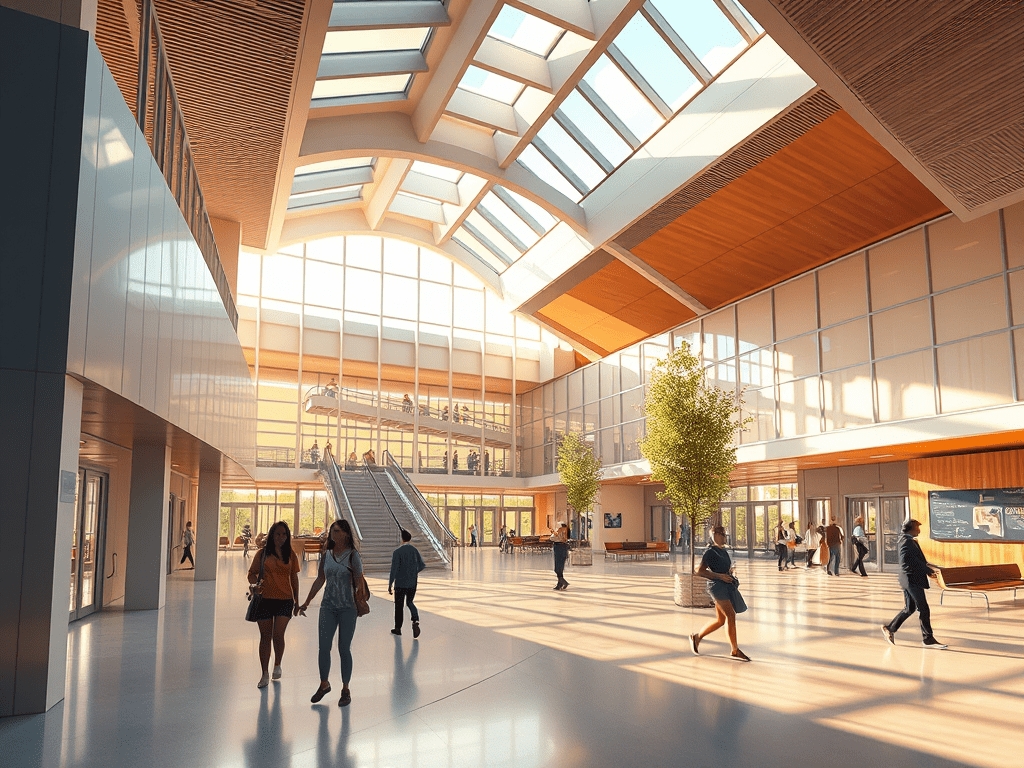Beyond the Blueprint: How 3D Visualization Enhances the Human Side of Design

Architecture is more than lines on a blueprint; it’s about creating spaces that resonate with the people who use them. Yet, the traditional design process often struggles to communicate how a building will feel, flow, and function in real life. Enter 3D visualization: a tool that bridges the gap between technical precision and the human experience, helping architects and designers craft spaces that truly connect with their users.
Bridging the Gap Between Technical Details and Human Experiences
The design process often prioritizes structural soundness, material efficiency, and aesthetic appeal—all essential elements. However, the human experience can get lost in translation when communicating with clients or stakeholders. 3D visualization changes that.
Why It Matters:
- Empathy in Design: By simulating how people will interact with a space, 3D visualization brings the user’s perspective into focus.
- Clarity in Communication: Complex architectural concepts become intuitive through interactive walkthroughs, enabling clients to visualize the final result.
- Enhanced Feedback Loops: When stakeholders understand how a space will feel, they provide more meaningful input, leading to better designs.
Example: A school renovation project used a 3D walkthrough to show how natural light would enhance classrooms and communal areas. The PTA and faculty could envision how the space would benefit students, leading to enthusiastic support for the design.
Using 3D Walkthroughs to Communicate the Lived Experience of Spaces
While 2D plans can explain dimensions and layouts, they rarely capture the essence of a space—its ambiance, flow, or sense of scale. 3D walkthroughs excel at this by placing clients and stakeholders inside the design.
Key Features That Enhance Lived Experience:
- Dynamic Navigation: Clients can move through spaces at their own pace, experiencing transitions between rooms and areas.
- Lighting Simulations: Realistic lighting conditions show how spaces feel at different times of day.
- Material Context: Seeing finishes and textures in situ helps stakeholders understand their impact on the space’s character.
Case Study: A community center design leveraged a 3D walkthrough to highlight the welcoming feel of its open lobby and natural lighting in activity rooms. Community leaders approved the design after experiencing how it would foster engagement and inclusivity.
Designs That Improved Community Engagement with 3D Tools
3D visualization isn’t just a design tool; it’s a storytelling medium that connects projects to the communities they serve. Here are real-world examples of how 3D walkthroughs have enhanced community engagement:
Case Study 1: Urban Park Development
An urban renewal project used 3D walkthroughs to present a new park design to residents. By showcasing pathways, gathering spaces, and interactive elements, the walkthrough addressed community concerns about safety and usability. The visualizations built trust and enthusiasm, resulting in a unanimous green light for the project.
Case Study 2: Healthcare Facility Transformation
In redesigning a hospital wing, architects used 3D visualization to show how the layout improved patient flow and staff efficiency. The immersive experience helped administrators and medical staff align on priorities, ensuring the final design met both clinical and emotional needs.
How to Leverage 3D Visualization to Prioritize People
To create designs that genuinely enhance human experiences, architects and designers can integrate these strategies into their workflows:
- Start with the End User: Use 3D walkthroughs early in the design process to simulate daily interactions, ensuring the space meets user needs.
- Encourage Stakeholder Participation: Share interactive models with all stakeholders—from clients to community members—to gather diverse perspectives.
- Iterate with Feedback: Use insights from walkthroughs to refine designs, aligning technical elements with human priorities.
By moving beyond blueprints and embracing 3D visualization, architects can design spaces that don’t just look good on paper but thrive in real life. Whether it’s a home, office, or public space, these tools help create environments that inspire, connect, and serve the people who inhabit them. The result? Designs that feel as good as they function—for everyone involved.